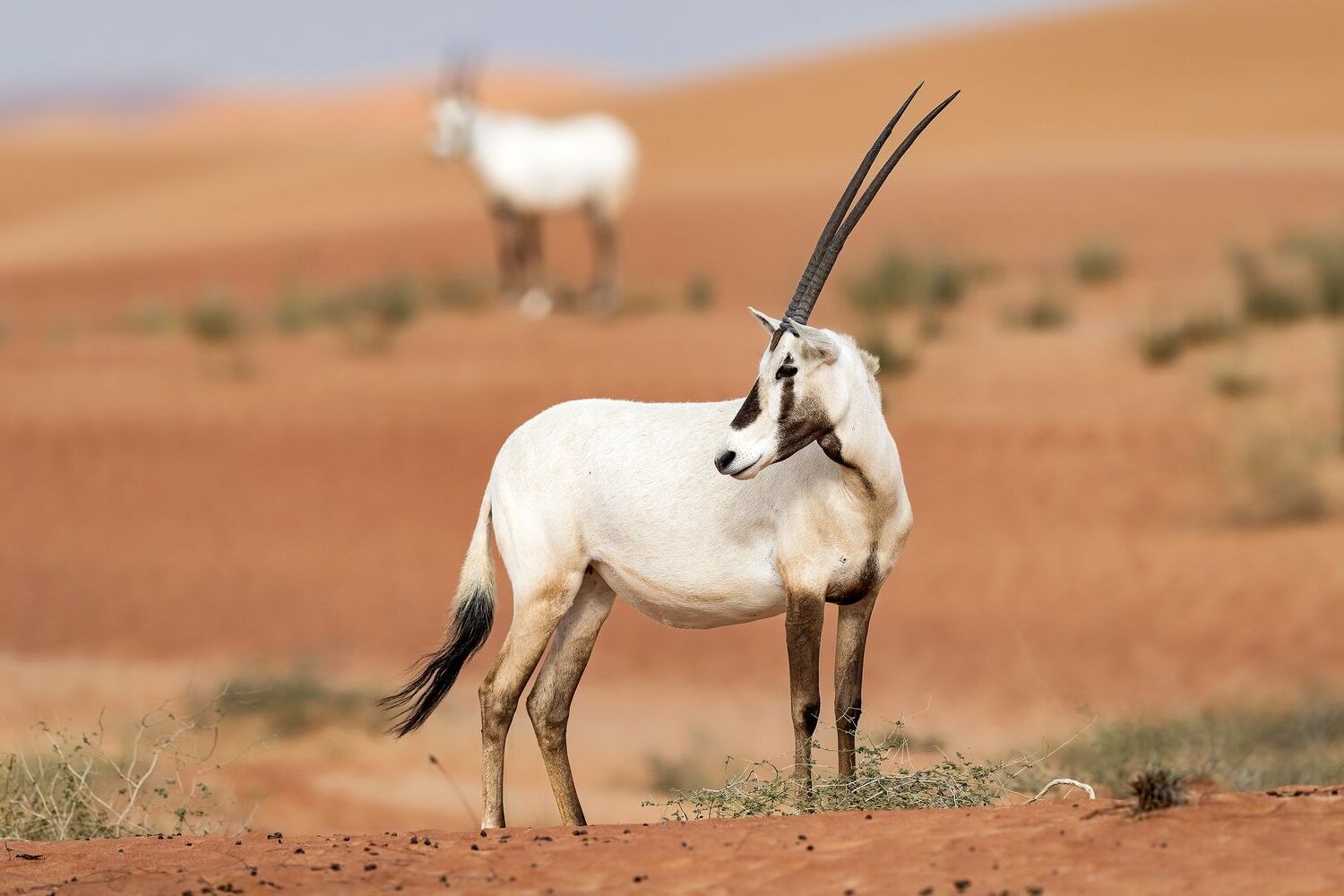
Have you ever wondered what it's like to live in one of the northernmost inhabited places on Earth? Svalbard, a Norwegian archipelago in the Arctic Ocean, offers a unique blend of extreme climate, diverse wildlife, and rich history. Located halfway between mainland Norway and the North Pole, Svalbard is home to around 2,700 residents and an astonishing 3,000 polar bears. This icy paradise features 24-hour daylight in summer and complete darkness in winter. Despite its harsh conditions, Svalbard boasts some of the cleanest air, fascinating wildlife, and intriguing historical sites. Ready to learn more about this Arctic wonderland? Let's dive into 50 captivating facts about Svalbard!
Key Takeaways:
- Svalbard, a unique Arctic archipelago, is home to diverse wildlife, extreme climates, and fascinating history, making it a hotspot for adventurous explorers and scientists alike.
- With its pristine air, visa-free access, and rich cultural diversity, Svalbard offers a one-of-a-kind experience for visitors, while also serving as a hub for scientific research and environmental conservation.
Location and Geography
Svalbard, a Norwegian archipelago, is one of the most unique places on Earth. Its location and geography make it a fascinating destination for adventurers and scientists alike.
- Svalbard is situated in the Arctic Ocean, roughly halfway between Norway and the North Pole.
- The archipelago consists of nine main islands, with Spitsbergen being the largest and most populated.
- Covering an area of 24,209 square miles (62,700 square kilometers), Svalbard boasts a rugged terrain of ice, rock, and permafrost.
Climate
The climate in Svalbard is extreme, with long periods of darkness and light, making it a challenging yet intriguing place to live and visit.
- Svalbard experiences one of the harshest climates on Earth, with the polar night lasting up to 24 hours during winter.
- Conversely, the polar summer brings 24 hours of daylight, creating a unique environment.
- The average annual precipitation is about 200 mm (7.8 inches), classifying Svalbard as an Arctic desert.
Population and Settlements
Despite its harsh conditions, Svalbard has a small but diverse population, with settlements that have adapted to the extreme environment.
- Svalbard has a permanent population of around 2,700 people, mostly Norwegians.
- Longyearbyen, the capital, is the largest settlement and serves as the de facto capital of Svalbard.
- Ny-Ålesund is the world's northernmost permanent settlement, with a population of 35 people year-round and up to 114 in the summer.
Wildlife
Svalbard is home to a diverse array of wildlife, including some of the most iconic Arctic animals.
- There are approximately 3,000 polar bears in the archipelago and surrounding sea, outnumbering the human population.
- Svalbard is home to an estimated 10,000 reindeer, a distinct subspecies known as the Svalbard reindeer.
- Visitors often encounter various Arctic wildlife, including foxes, reindeer, seals, walruses, and numerous bird species.
Cleanest Air in the World
Ny-Ålesund in Svalbard is renowned for having some of the cleanest air in the world, making it an ideal location for scientific research.
- Located far from major pollution sources, Ny-Ålesund provides an ideal environment for scientists to monitor air quality and study human impact on the planet.
History of Whaling
The history of Svalbard is deeply intertwined with whaling, which brought the first humans to the archipelago over 400 years ago.
- Whaling significantly devastated local wildlife, bringing several species to the brink of extinction.
- The bowhead whale, once a popular catch, was eventually exterminated from the waters around Svalbard.
Coal Mining
Coal mining has played a significant role in Svalbard's history and economic development.
- Longyearbyen is named after American businessman John Munro Longyear, who established Svalbard's first coal mine.
- Coal mining has been a significant industry in Svalbard, contributing to its economic development.
National Parks
Svalbard is home to several national parks that aim to preserve its unique natural environment for future generations.
- Seven of Norway's 47 national parks are located in Svalbard.
- These parks cover a significant portion of the archipelago, including Forlandet, Indre Wijdefjorden, Nordenskiöld Land, Nordre Isfjorden, Nordvest-Spitsbergen, Sassen-Bünsow Land, and Sør-Spitsbergen.
Arctic Desert
Svalbard's classification as an Arctic desert is due to its low precipitation levels, creating a unique and harsh environment.
- The northeastern island of Nordaustlandet is particularly noted for its desert-like conditions.
- The west side of Svalbard is more lush in some areas, despite the overall low precipitation.
Cultural Diversity
Despite its remote location, Svalbard is home to a culturally diverse population, with residents from over 40 nationalities.
- Over 40 nationalities call Svalbard home, with a significant presence of Norwegians and people from countries such as Canada, Spain, the Philippines, and Thailand.
No Natives Born in Svalbard
Due to the lack of healthcare facilities and cemeteries, no one can be born or die in Svalbard.
- Pregnant women must return to the mainland before their due date.
- There are no cemeteries on the archipelago, so residents must return to mainland Norway for burial.
Visa-Free Zone
Svalbard is unique in that it is the only visa-free zone in the world, allowing foreigners to enter and stay as long as they meet certain conditions.
- Foreigners can enter and stay as long as they have an income, a place to stay, and are healthy.
- Serious health conditions often necessitate a return to mainland Norway for proper care.
Healthcare System
The lack of a healthcare system in Svalbard means residents must rely on mainland Norway for medical care.
- There is no healthcare system or social network in Svalbard.
- Residents must rely on medical evacuation to mainland Norway for serious health conditions.
Tourism and Activities
Svalbard is a hotspot for outdoor tourism, offering a range of activities for adventure seekers.
- Visitors can engage in skiing, snowmobiling, dog sledding, and exploring ice caves.
- The archipelago's unique landscape and wildlife make it an attractive destination for adventure seekers.
Ghost Towns
Svalbard is home to one of the world's top ghost towns, Pyramiden, a former mining community.
- Pyramiden was purchased by the USSR in 1927 and once housed over a thousand inhabitants.
- It was deserted during the 1998 Russian currency crisis, leaving behind remnants like an indoor swimming pool and a theater.
Arctic World Archive
The Arctic World Archive in Svalbard serves as a data repository for the world, preserving information for future generations.
- It stores data from various sources, including GitHub, to ensure the preservation of valuable information.
Seed Saving Facility
Svalbard is home to a seed saving facility dedicated to preserving genetically pure seeds.
- This facility plays a significant role in maintaining biodiversity and ensuring the availability of seeds for future agricultural needs.
Historical Monuments
Svalbard's national parks are home to historical monuments, including former whaling stations and burial grounds.
- These sites provide valuable insights into Svalbard's rich history and the lives of its early inhabitants.
Midnight Sun and Polar Night
Svalbard experiences the midnight sun and polar night, creating unique conditions for residents and visitors.
- The midnight sun occurs during the summer months, with the sun remaining above the horizon for 24 hours.
- The polar night in winter brings total darkness, lasting up to 90 days.
Snow Sports Lovers
Svalbard is a paradise for snow sports enthusiasts, with opportunities for skiing and other winter sports even in summer.
- Even in summer, temperatures range from -2 to -5 degrees Celsius, with mountains still covered in snow.
Wildlife Encounters
Visitors to Svalbard often encounter various Arctic wildlife, making it an excellent location for wildlife spotting.
- The archipelago's pristine environment is home to foxes, reindeer, seals, walruses, and numerous bird species.
Polar Bear Safaris
Despite the presence of polar bears, there are no official polar bear safaris in Svalbard.
- The bears are wild animals and cannot be chased or hunted, with tour operators emphasizing safety.
Firearms Requirement
The law in Svalbard requires anyone traveling outside settlements to carry a firearm or other means to scare off polar bears.
- This measure is essential for ensuring safety in areas where polar bears are present.
Flare Guns
In addition to firearms, flare guns are highly recommended for deterring polar bears.
- These devices emit a loud noise and bright light, helping to scare bears away from human settlements.
No Firearms in Settlements
It is strictly prohibited to use firearms within settlements, ensuring a peaceful environment.
- Public buildings like shops and restaurants display 'no firearms permitted' signs for safety.
Cultural Events
Svalbard hosts various cultural events throughout the year, celebrating its unique culture.
- These events bring together residents and visitors, fostering a sense of community.
Education and Research
Svalbard is a hub for educational and research activities, attracting scientists and students from around the world.
- The archipelago's unique environment and wildlife make it an ideal location for scientific studies and educational programs.
Tourist Infrastructure
Svalbard has developed a robust tourist infrastructure to cater to visitors, with various accommodations, restaurants, and tour operators.
- Longyearbyen, the capital, offers essential services for tourists, making it a convenient base for exploring the archipelago.
Environmental Conservation
Svalbard is committed to environmental conservation, with national parks and protected areas ensuring the preservation of its natural resources.
- Conservation efforts aim to protect the archipelago's unique environment for future generations.
Historical Significance
Svalbard has significant historical importance, with remnants of whaling stations, mining communities, and other historical sites.
- These sites provide valuable insights into the archipelago's past and the lives of its early inhabitants.
Arctic Circle
Svalbard's location within the Arctic Circle makes it one of the northernmost inhabited places on Earth.
- The archipelago's unique location contributes to its extreme climate and fascinating environment.
Geological Features
Svalbard features a diverse range of geological formations, including glaciers, mountains, and ice caves.
- These natural wonders attract tourists and scientists alike, offering a unique glimpse into the Earth's geological history.
Svalbard's Unique Wonders
Svalbard stands out as a place of extremes and wonders. From its harsh climate to its diverse wildlife, this Arctic archipelago offers a glimpse into a world few get to experience. The polar bears outnumbering humans, the midnight sun, and the polar night are just a few of the unique features that make Svalbard fascinating. Its history of whaling, coal mining, and ghost towns like Pyramiden add layers of intrigue. The Global Seed Vault and Arctic World Archive highlight its global importance. Despite the challenges, the community's resilience and the commitment to conservation ensure Svalbard remains a vital part of our world. Whether you're an adventurer, a scientist, or just curious, Svalbard offers something unforgettable. This icy paradise continues to captivate and inspire, proving that even the harshest environments can hold incredible beauty and significance.
Frequently Asked Questions
Was this page helpful?
Our commitment to delivering trustworthy and engaging content is at the heart of what we do. Each fact on our site is contributed by real users like you, bringing a wealth of diverse insights and information. To ensure the highest standards of accuracy and reliability, our dedicated editors meticulously review each submission. This process guarantees that the facts we share are not only fascinating but also credible. Trust in our commitment to quality and authenticity as you explore and learn with us.


